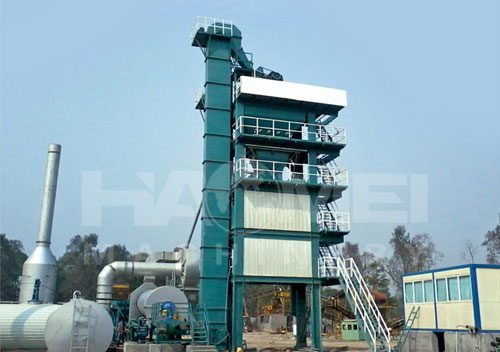Simple Introduction Of Asphalt Mixing Plant
An asphalt mixing plant is a plant used for the manufacture of asphalt , macadam and other forms of coated roadstone, sometimes collectively known as blacktop or asphalt concrete.
Asphalt mixing plants for road construction
The manufacture of coated roadstone demands the combination of a number of aggregates , sand and a filler (such as stone dust), in the correct proportions, heated, and finally coated with a binder, usually bitumen based or, in some cases, tar ,although tar was removed from BS4987 in 2001 and is not referred to in BSEN 13108/1 . The temperature of the finished product must be sufficient to be workable after transport to the final destination. A temperature in the range of 100 – 200 degrees Celsius is normal.
Increasingly, recycled asphalt pavement (RAP) is used as part of the mix. The binder used is flammable, and the heaters are large liquid or gas fired burners. RAP is introduced after the heating process and must be accounted for in the overall mix temperature calculations.
There are three main classes of plant: batch heater, semi-continuous (or “asphalt plant”), and continuous (or “drum mix”). The batch heater has the lowest throughput, the continuous plant the highest at up to around 500 Tonnes per hour.
Supply of roadstone for large contracts is generally by tender with considerable pressure on price. A faulty batch of roadstone must be planed up and relaid, often with additional lane rental charges, at a cost which may be orders of magnitude higher than the original price, so sophisticated control systems are a necessity.
Main Structure of asphalt mixing plant
The asphalt mixing plant is mainly composed of cold aggregate supply system, drum dryer , coal burner, coal feeder, dust collector, hot aggregate elevator, vibrating screen, filler supply system, weighing and mixing system, asphalt storage, bitumen supply system.

Asphalt Mixing Plant


